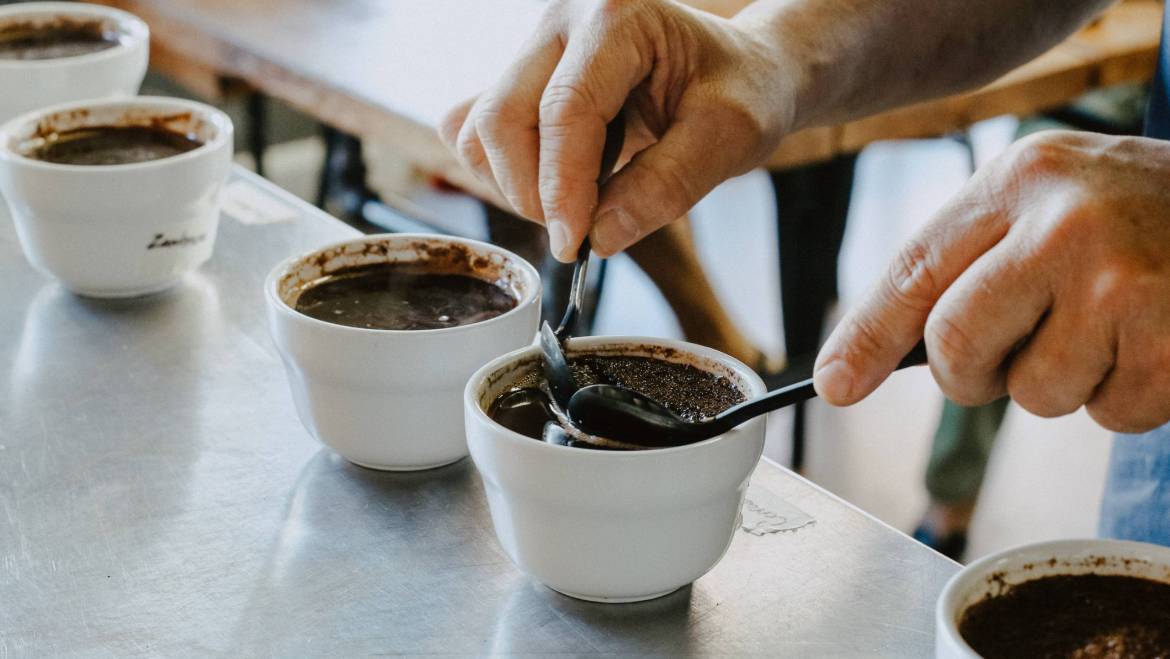The Art of Coffee Tasting: Elevate Your Senses & Discover Hidden Flavors
Introduction: Unveiling the World of Coffee Tasting
Coffee is more than just a drink; it's an experience that stimulates our senses and takes us on a journey through a world of rich flavors and aromas. In this article, we will guide you through the art of coffee tasting, and share expert tips to help you elevate your senses and discover the hidden flavors within every cup.
Section 1: Coffee Origins and Flavor Profiles
1.1 Understanding Coffee Beans and Their Origins
The flavors of coffee are influenced by the beans' origins and processing methods. Each coffee-growing region has distinct characteristics, which impact the flavor profiles of the beans. Some of the most popular coffee-producing countries include:
- Ethiopia: Known for its fruity, floral, and wine-like flavors
- Colombia: Produces balanced coffees with caramel, nutty, and fruity notes
- Brazil: Offers bold, chocolatey, and nutty coffees
- Indonesia: Delivers earthy, spicy, and full-bodied flavors
1.2 The Impact of Processing on Flavor
Coffee beans undergo various processing methods before reaching your cup. These methods, such as washed, natural, or honey processing, can have a significant impact on the final flavor profile of the coffee:
- Washed Process: This method produces clean, bright, and acidic flavors, enhancing the bean's inherent qualities.
- Natural Process: Beans are sun-dried with their fruit, resulting in sweet, fruity, and complex flavors.
- Honey Process: A combination of washed and natural methods, this process imparts a mix of fruity and balanced flavors.
Section 2: The Coffee Tasting Experience
2.1 The Four Steps of Coffee Tasting
Coffee tasting, also known as "cupping," is a systematic approach to evaluating coffee's flavors and aromas. The process consists of four key steps:
- Smell the coffee grounds: Assess the dry aroma to identify the initial scent of the coffee.
- Brew the coffee: Use a consistent brewing method to ensure accurate comparisons.
- Break the crust: Stir the coffee to release trapped aromas and assess the wet aroma.
- Slurp and taste: Slurp the coffee to aerate it, spreading the liquid across your palate to identify flavors.
2.2 Enhancing Your Senses: Tools and Techniques
To elevate your coffee tasting experience, consider using these tools and techniques:
- Aroma Kit: An aroma kit can help you train your nose to identify common coffee scents, such as fruity, floral, or nutty notes.
- Tasting Wheel: The Specialty Coffee Association's Tasting Wheel provides a visual guide to assist in pinpointing specific flavors and aromas.
- Consistent Brewing: Use a standardized brewing method, like a pour-over or French press, to ensure a consistent tasting experience.
Section 3: Coffee Tasting at Home
3.1 Setting Up a Coffee Tasting Session
To conduct a coffee tasting session at home, follow these steps:
- Choose a variety of coffees: Select beans from different origins and with varying processing methods.
- Brew the coffees: Use the same brewing method and water-to-coffee ratio for each coffee.
- Arrange the cups: Place the coffees in a circle, and label each cup to avoid confusion.
- Evaluate the coffees: Follow the four steps of coffee tasting, taking notes on each coffee's flavors and aromas.
3.2 Developing Your Palate: Tips for Coffee Lovers
To further refine your coffee tasting abilities, try these expert tips:
- Taste a variety of foods: Explore different flavors and textures to enhance your ability to detect and describe flavors in coffee.
- Keep a tasting journal: Record your impressions of each coffee you taste, noting its origin, processing method, and flavor profile.
- Attend coffee events: Join local coffee tastings, workshops, or cupping sessions to learn from other enthusiasts and professionals.
- Experiment with brewing methods: Try different brewing techniques to explore how they impact the flavor profile of your coffee.
Section 4: Mastering the Art of Coffee Tasting
4.1 The Role of the Coffee Taster in the Industry
Professional coffee tasters, also known as Q Graders, play a crucial role in maintaining and improving the quality of coffee. They evaluate coffee samples, identifying defects and assessing flavor characteristics to ensure that consumers receive a consistent, high-quality product.
4.2 Becoming a Certified Q Grader
If you're passionate about coffee and wish to pursue a career in coffee tasting, consider becoming a Certified Q Grader. The certification process involves completing a rigorous training program, which covers topics such as:
- Coffee origins and processing methods
- Cupping protocols and scoring systems
- Sensory analysis and flavor identification
Upon successful completion of the program, you'll be equipped with the knowledge and skills to evaluate coffee professionally, contributing to the growth and development of the coffee industry.
Conclusion: The Journey to Coffee Tasting Mastery
The art of coffee tasting is a journey of sensory exploration and discovery. By understanding coffee origins, processing methods, and tasting techniques, you can elevate your senses and uncover the hidden flavors within every cup. Whether you're a casual coffee drinker or aspiring professional taster, embracing the world of coffee tasting will enrich your appreciation for this beloved beverage and provide endless opportunities for exploration and enjoyment.




Add Comment